The National Defense Authorization Act (NDAA) is a critical U.S. federal law with far-reaching implications for the security technology sector. Section 889, in particular, has become a significant topic of discussion in the physical security industry due to its impact on US-based end-users that receive federal funding. Compliance with Section 889 is necessary for government facilities and federally funded projects in the US to combat potential physical security threats. This guide explores NDAA Section 889, the ban on certain equipment, and alternative solutions.
The Importance of NDAA Compliance in the Security Industry
Awareness of NDAA Section 889 is essential for security companies for several reasons:
- Access to Government Contracts: Many businesses rely on government contracts for their revenue. Compliance with Section 889 is often a requirement for contract eligibility.
- Meeting Legal Requirements: The NDAA sets prohibitions on the procurement of certain equipment from specified countries and/or entities.
- Protection Against Cyber Attacks: The NDAA highlights the importance of cybersecurity, helping to mitigate the risk of cyber threats and ensuring that the products and services provided by security companies meet specific cybersecurity standards.
- Maintaining Trust with Government Agencies: Section 889 compliance signals a commitment to following legal requirements and building and maintaining trust with government agencies, other businesses, and the public.
- Risk Mitigation: Compliance with NDAA Section 889 helps organizations mitigate legal, financial, and operational risks while also highlighting their dedication to secure practices.
NDAA Section 889 Compliance Requirements
Under NDAA Section 889, security integrators cannot sell or install security cameras that do not meet compliance requirements. Additionally, federally funded entities are prohibited from enlisting the services of integrators that utilize products, services, or equipment from non-compliant sources.
Procuring Compliant Equipment with Maxxess Systems
To ensure compliance, organizations can consider using Maxxess Systems’ eFusion software and hardware solutions. These solutions are designed to meet the stringent requirements of NDAA Section 889.
- Security Cameras for Government Applications: Maxxess Systems’ eFusion connects to a range of security cameras suitable for government use, designed to comply with Section 889 requirements.
- AI-Powered Analytics and Instant Alerts: The eFusion software integrates AI-powered analytics and instant alerts, enhancing the security infrastructure’s overall effectiveness.
- Open Platform Integrations: Maxxess Systems’ solutions are built on an open platform, allowing for seamless integrations with other systems and technologies.
- Free FEMA Grant Application Assistance: To aid compliance, Maxxess Systems provides assistance with FEMA grant applications, helping organizations secure funding for compliant security solutions.
Compliance Steps for Organizations
- Assessing Inventory: Organizations must assess whether federal funds are being used to purchase any video security equipment or services provided by restricted sources. This includes video security cameras, video recorders, video surveillance servers, video surveillance data storage devices, and more.
- Replacement and Removal: If equipment from the prohibited list is identified, it must be removed and replaced. Maxxess Systems recommends using compliant, open-platform products to avoid an entire system overhaul and reduce replacement costs
- Ongoing Compliance: Given the ever-changing nature of the security and technology landscape, organizations must conduct regular assessments, perform regulatory reviews, and update security policies to ensure ongoing compliance.
Understanding Covered Telecommunications Equipment
NDAA Section 889 prohibits procuring or obtaining any equipment, system, or service that uses “covered telecommunications equipment or services” as a substantial or essential component of any system or as critical technology as part of any system. This includes extending or renewing a contract to procure or obtain such equipment, systems, or services. Section 889 also prohibits using federal loan or grant funds to procure or obtain covered telecommunications equipment or services.
Key Takeaways for NDAA Physical and Cyber Security Compliance
Although Section 889 of the NDAA largely impacts physical security and the use of certain equipment in government facilities, cybersecurity best practices should not be overlooked. Security contractors are advised to review each update and take initiatives to ensure compliance in both physical security and cybersecurity. Compliance opens doors to the possibility of security contractors taking on large-scale government projects and helping enhance security to better safeguard government assets and classified information.
By adhering to these compliance guidelines, organizations can maintain their eligibility for government contracts, mitigate risks, and ensure that their security practices align with federal standards. The ongoing commitment to NDAA compliance not only supports legal and financial stability but also builds a foundation of trust and reliability in the security technology sector.
Conclusion
Compliance with NDAA Section 889 is a critical aspect of operating within the security technology sector, especially for organizations that rely on federal funding. By understanding the requirements and implementing the necessary measures, businesses can ensure they remain eligible for government contracts and contribute to a more secure environment. Maxxess Systems, with its eFusion software and partnered hardware solutions, provides the necessary tools and support to help organizations navigate these regulatory requirements effectively.

